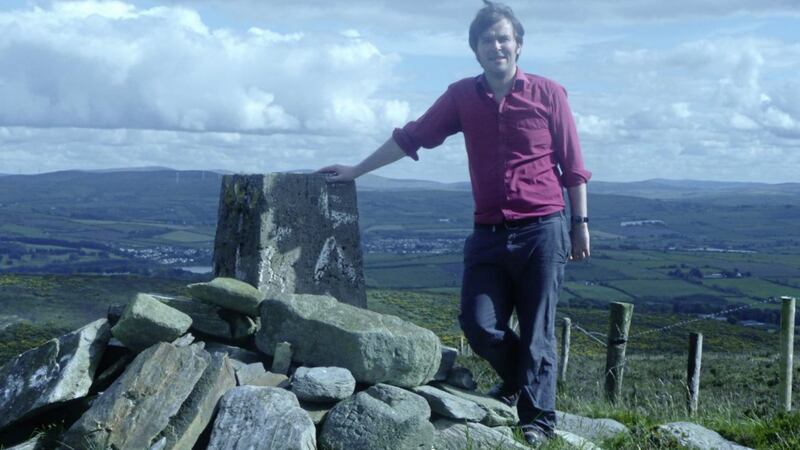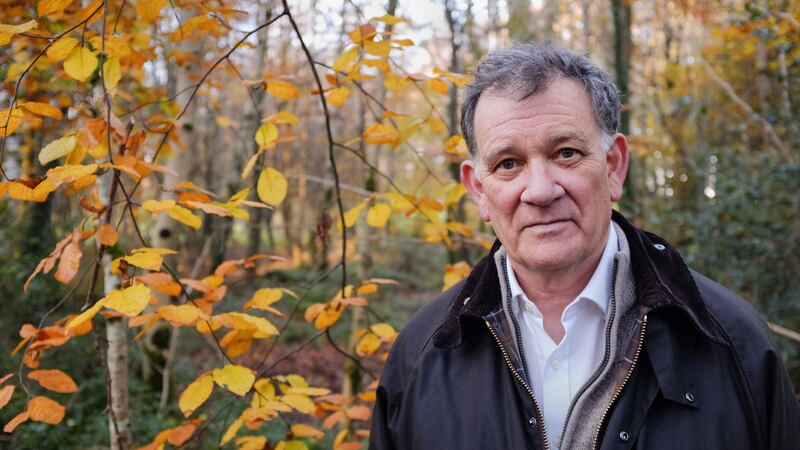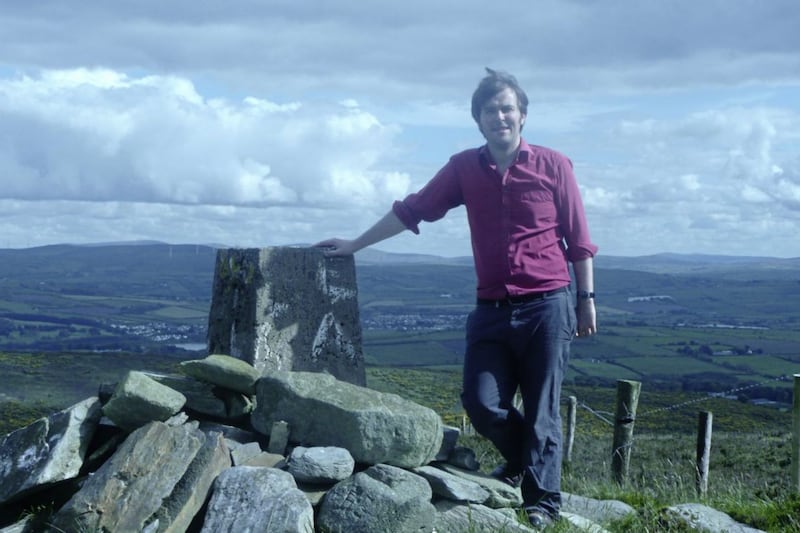MOST of us experience Ireland's now almost invisible border only in passing while en route to some other destination. However, for the past couple of years, writer and enthusiastic cartographer Garrett Carr has been venturing off the beaten border track to become better acquainted with our controversial national 'dividing line'.
His new book, The Rule of The Land: Walking Ireland's Border, finds him emulating the Vikings as he approaches Carlingford Lough by sea – albeit in his friend and occasional co-traveller Paddy Bloomer's trusty canoe rather than a longboat – before going ashore to commence an engrossing 300 mile long trek through the fields, forests and boglands of the borderline all the way to Moville in his native Co Donegal.
Carr brings his island-spanning adventure to life in a page-turning manner by delving into the history and mythology of the areas he's exploring and sharing his interactions with 'borderlanders' encountered during the quest – farmers, workers, landowners, startled lovers, inquisitive livestock – and the sights he encounters along the way, from ancient tombs and standing stones to Troubles-era abandoned homes, fly-tipping sites and modern architectural monstrosities.
Importantly, the book also documents a plethora of man-made features along the border not found on any Ordinance Survey map.
Previously best known for acclaimed trilogy of young adult novels, The Badness of Ballydog, Lost Dogs and Deep Deep Down, the Killybegs-born, Belfast-based author explains how his new non-fiction work came into being.
"The seed of it is probably the fact that I grew up quite near the border," says Carr (41), who teaches Creative Writing at Queen's University Belfast.
"We would cross it quite often for shopping and things. I suppose those images from childhood kind of stayed with me – I had this urge to go and look at this place that you weren't supposed to go to when I was a kid and the place was militarised.
"Other writers also made me think about returning to it, like Tim Robinson, who's written a whole set of books about the Aran Islands and Connemara. He also made these really beautiful, intricate maps preserving place names and things like that – he'd talk to the old people and record the name for every little hill and cave.
"So he got me thinking about the border in terms of making maps. That's what I was doing when I first started – there was always a book in the back of my mind, but mapping it is what set me off walking along it."
Indeed, Carr's carefully drawn maps of each region he visited are included in The Rule of The Land, each prefacing his written experiences within the area of exploration.
"The first thing I started noticing was these things I called 'connections'," he tells me.
"These are places where people have made little 'holes' in the border – little bridges crossing rivers, or just gates in hedgerows. I thought those were quite interesting as they weren't on any other maps, so I started recording them."
In this way, The Rule of The Land – its title gifted by a farmer in the Slieve Gullion area who used this phrase to sum up the extent of his own local knowledge – documents the 'alternative story' of the border region, where locals will often create their own unofficial crossing points out of convenience and necessity.
"Most of it is folks just going to visit their neighbours or to the nearest shop or moving their cattle about," says Carr, who mapped out 77 of these improvised features on his travels – including one under-construction bridge between the properties of a newly married couple and their in-laws on opposite sides of what will soon become Europe's most westerly frontier in a post-Brexit world.
"Quite a lot them were made by children, kids setting up stepping stones to get across to their friends' houses and the like. These are the kind of things that don't make it on to maps: smaller domestic stories, the way children live. So I enjoyed documenting them – it became like an alternative way of looking at the border."
Early in the book, Carr references Belfast-born artist John Byrne's amusing art installation from the year 2000: a 'Border Interpretive Centre' in a vacant building on the main north/south road selling T-shirts, postcards and badges bearing images of local military installations or bearing the slogan 'Good luck from the border'.
When the pair met to discuss their shared frontier obsessions, Byrne referred to himself as a 'border worrier', unable to stop thinking about how to approach this politicised zone from new, unexpected angles.
He has found a kindred spirit in Garrett Carr.
"I saw his exhibition The Border Itself in Dublin in 2001 and that probably went into the back of my head as well, the idea of visiting the border as a tourist," says the writer.
"Back then it was clever and a bit of a joke – but now I actually take the joke seriously!
"I really think people should visit the border because it's kind of Ireland's undiscovered region."
:: Garret Carr is at No Alibis in Belfast tonight, tickets free via NoAlibis.com. The Rule of The Land is out now, published by Faber & Faber.



